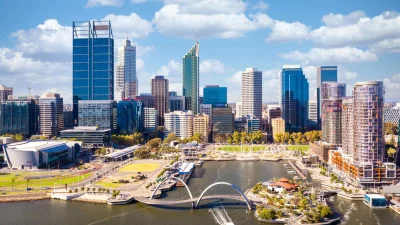Melbourne industrial takes on Sydney
Melbourne is expected to be the stronger industrial market compared to Sydney, based in construction growth in the past couple of years.
In 2000, almost 1.5 million square metres of industrial space was constructed, compared to Sydney's 750,000 sq m.
The key driver for the sector is industrial production ? which is expected to slow during the next three years.
CB Richard Ellis head of research, Kevin Stanley, says industrial production grew 4 per cent in 2000, but this is expected to drop to 2.5 per cent this year.
"Development is expected to follow the production figures and all states will be heading in a similar direction-downwards," he says.
An upturn in industrial production is expected in 2004, but it will not reach the growth levels of 2000.
The strong supply of industrial development has hit rental growth in cities such as Melbourne. In the fourth quarter of 2000, Melbourne rental growth was -5.07 per cent, yet Sydney enjoyed almost the opposite at 4.76 per cent growth.
Adelaide, Brisbane and Perth followed Melbourne in the downward rental growth, will the three cities achieving a percentage fall just below that of Melbourne.
Stanley says Melbourne is the leading city for industrial space, but construction will ease in 2001 with more competition from developers and this will force down yields.
Recommended for you
The central bank has released its decision on the official cash rate following its November monetary policy meeting.
ASIC has cancelled the AFSL of a Melbourne-based managed investment scheme operator over a failure to pay industry levies and meet its statutory audit and financial reporting lodgement obligations.
Melbourne advice firm Hewison Private Wealth has marked four decades of service after making its start in 1985 as a “truly independent advice business” in a largely product-led market.
HLB Mann Judd Perth has announced its acquisition of a WA business advisory firm, growing its presence in the region, along with 10 appointments across the firm’s national network.











